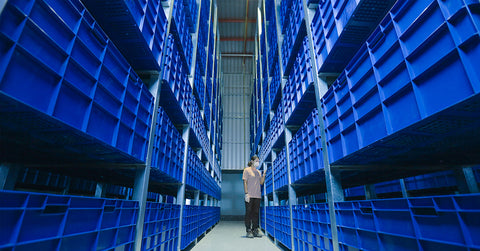We have been getting a lot of questions about the safety and hygiene of cricket farming. It is a novel food so we understand the concerns but as you will see there’s nothing to worry about. Let’s take a closer look at what we do at our farm to ensure our products are safe and nutritious.
What happens to cricket poop?
One question that is especially common has to do with poop. We can’t process every single cricket the way a pig or a cow would be at a traditional farm to make sure the intestinal contents stay out. That’s why we stop feeding our crickets 24 hours before harvesting to ensure their digestive systems are totally empty. This way we avoid any bacteria build up or remaining feed in the cricket flour. Crickets can survive up to 2 weeks without food in nature so this short fast isn’t a big issue for them.
But you should know one more thing about cricket poop. When combined with cricket’s exoskeletons it forms something called “Frass” which can be used as an excellent organic fertilizer for plants. This means that crickets can be a part of a circular economy where they are fed biowaste and they contribute back to plant production in a form of fertilizer.

Multi-step cleaning process
The elimination of poop is just step one in a long process dedicated to hygiene and safety on our farm. When the crickets are harvested, they go through extensive cleaning and sterilization. We use a three-step process for cleaning with UV and filtered water. After that the wet matter is also boiled and later dried and ground.

Quality control
All of these processes are closely monitored and there are several places where we can spot potential issues with quality control and lab tests. We take safety really seriously and that’s why we are the world’s first Good Agricultural Practices (GAP) certified cricket farm. We have also the highest food safety certifications possible in the food industry.

United Nations recommends cricket protein as safe
Insect farming requires no use of antibiotics and it’s also much safer than cattle or chicken farming in terms of diseases caused by the flu and corona viruses. These are zoonotic diseases, meaning they are transmitted between animals and people. We wrote more about this in a previous article. This quote from the UN sums it up nicely.
“Because insects are taxonomically much more distant from humans than conventional livestock, the risk of zoonotic infections is expected to be low (1).”
Support a sustainable startup with a big mission, try Sens products
At Sens, our mission is to make cricket protein look good and taste delicious! You can experience it with our tasty protein bars, gluten-free pasta, savoury protein crackers, baking cricket flour, or nutritious chocolate protein blend.
Sources:
1) FAO (Food and Agriculture Organization of the UN), ‘Edible insects – Future prospects for food and feed security’, Rome 2013, http://www.fao.org/docrep/018/i3253e/i3253e.pdf




